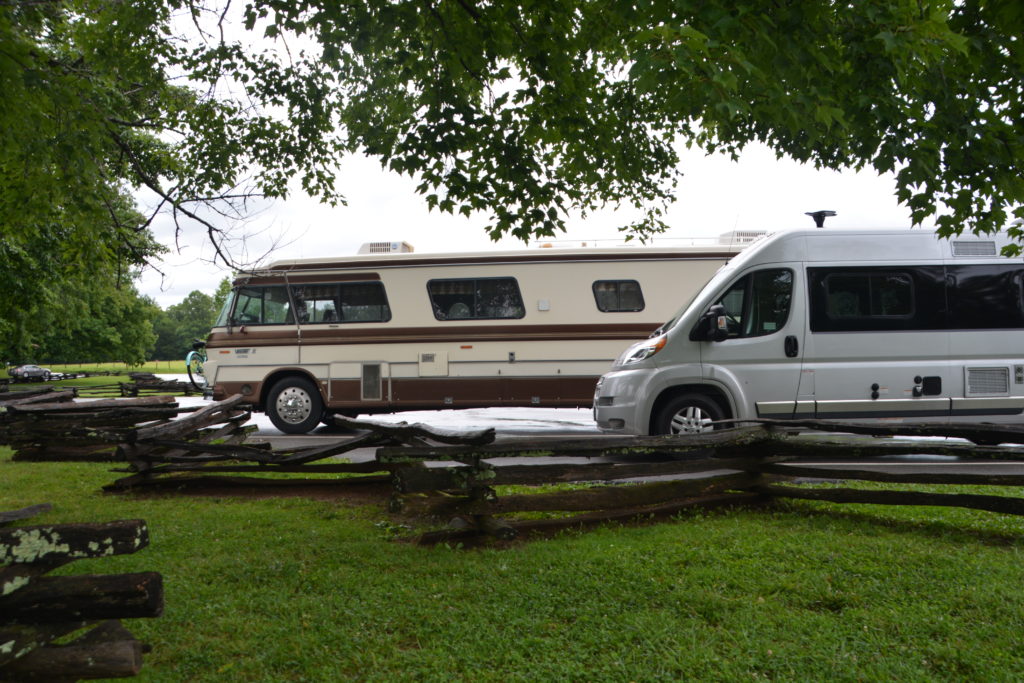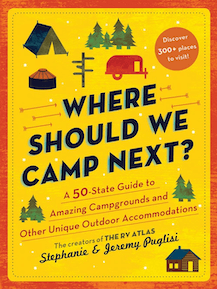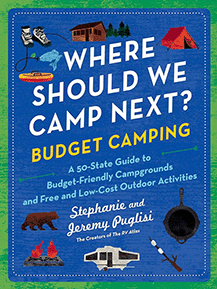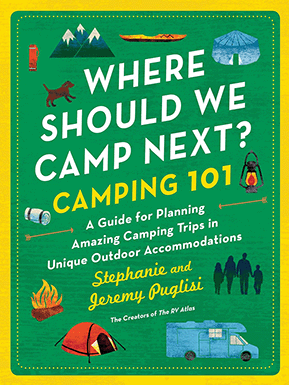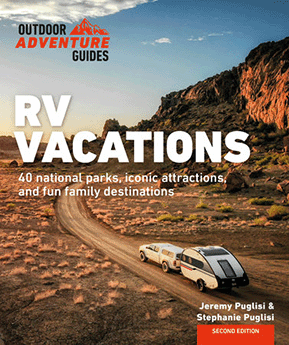Who is ready to do some RV shopping? The good news is that there are a ton of great choices out there. However, the number of options can be quite overwhelming when you are just getting started. From towables to motorized units, each type of RV has some pros and cons to consider.
You can listen to us talk more about RV shopping by clicking on the play arrow at the top of this article. Or just search for The RV Atlas in your favorite podcast app like Apple Podcasts, Stitcher, Google Podcasts. You can also ask Alexa to play The RV Atlas if you happen to have your hands full at the moment ?
Pop Up Camper
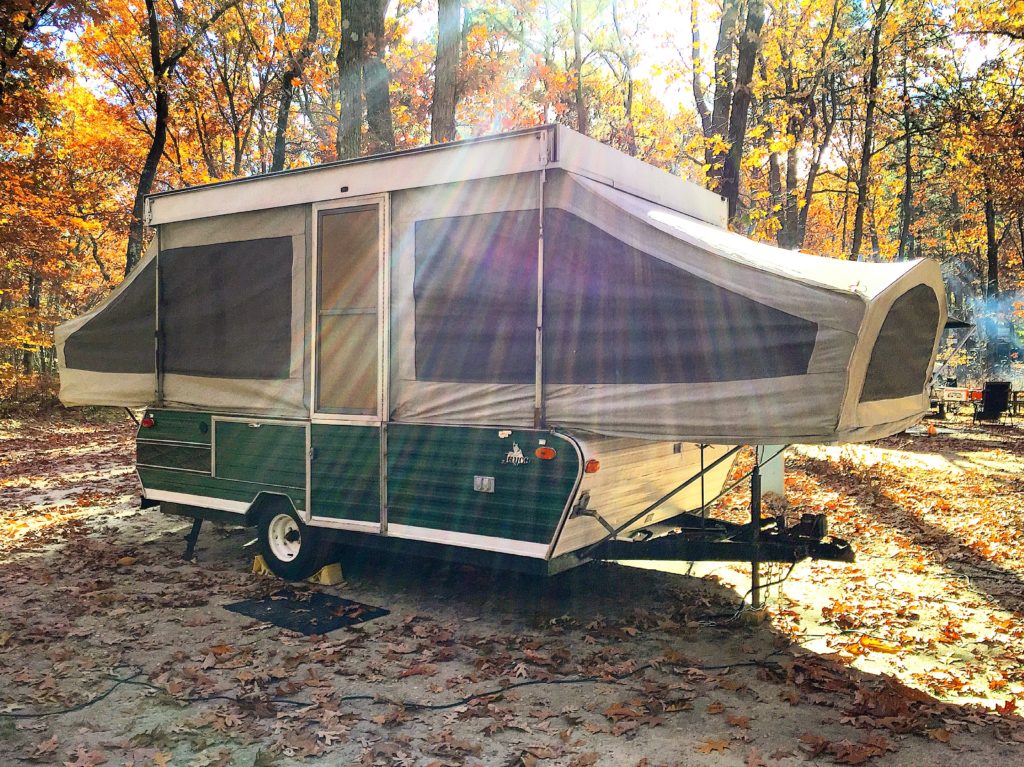
What is a pop up camper?
A pop up camper is an expandable unit that folds down into a box on wheels for traveling. When it is “popped up,” the sides are more similar to a tent than a trailer since the walls are soft. You will find pop ups that range in size from 8-24 feet and sleep up to eight people. Expect to pay anywhere from $6,000-24,000. You can find used units for a steal!
What are the benefits of a pop up camper?
Because they are lightweight and budget friendly, pop up campers are super popular, especially for those who are RV shopping for their first rig. You’ll even find tons of used ones on the market for super low prices. Just be careful to find one that has been well maintained. Pop ups are easy to store. Plus, they are perfect for those who want that traditional camping atmosphere. Open the windows, and let the nature in!
What are the drawbacks of a pop up camper?
The biggest drawbacks to pop up campers are the maintenance and set up. Soft-sided campers require more care than hard-sided trailers due to the materials and the construction. They are not ideal for multi-destination road trips due to the time and energy involved in setting up. They are also trickier to pack since everything must fit in the camper while it is folded down. Finally, pop ups are less comfortable during extreme heat, cold, or precipitation. This means you may have have a shorter camping season.
Hybrid Travel Trailer
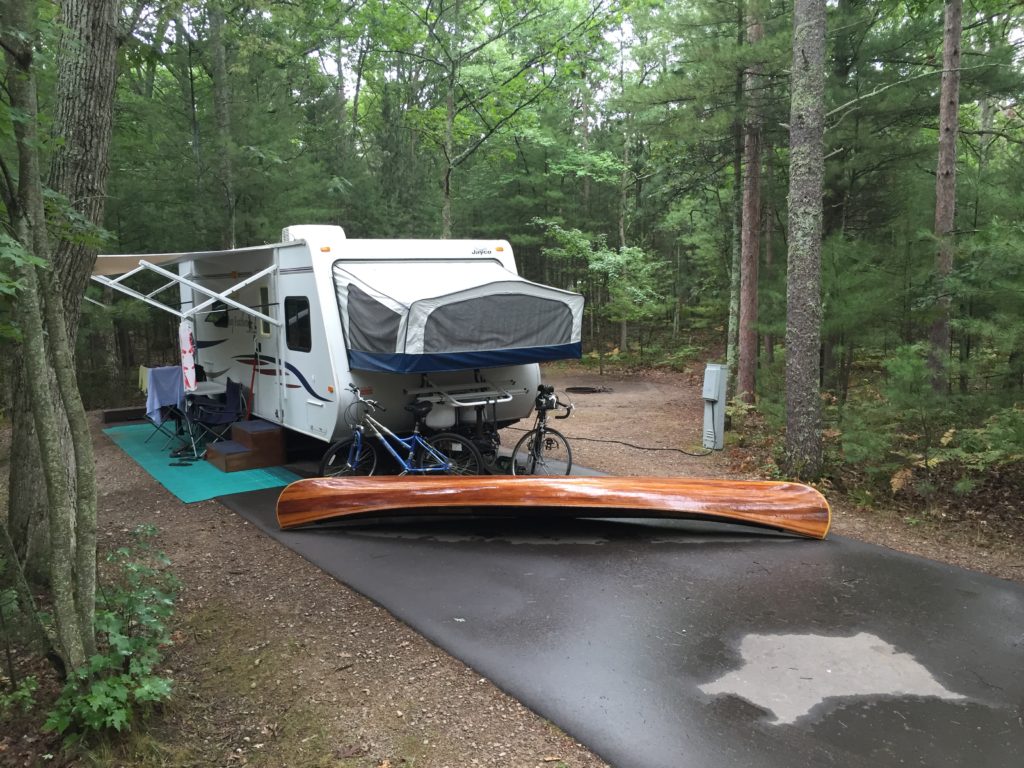
What is a hybrid trailer?
Hybrid trailer share features of both pop up campers and traditional travel trailers. They are basically a hard-sized trailer with pop-out screened-in beds. Hybrid trailers range in size from 19-30 feet and sleep up to eight people. Expect to pay anywhere between $10,000-30,000.
What are the benefits to a hybrid trailer?
Hybrids are a great option for those who want the most sleeping space in the smallest-sized unit, without having to pop up a whole camper. They are lightweight and can be found in shorter lengths. This makes them easier to tow and to store. You’ll find hybrids with as many as three large beds. They are easier to pack than a pop up camper. Plus, they also make the outdoors feel more accessible, thanks to the large windows.
What are the drawbacks to a hybrid trailer?
Like their pop up cousins, hybrid trailers do require more maintenance due to their canvas sides. They also require extra time and energy for set up. Condensation can be a probably, depending on the weather conditions. Also, weather could greatly affect the length of your camping season.
Conventional Travel Trailer
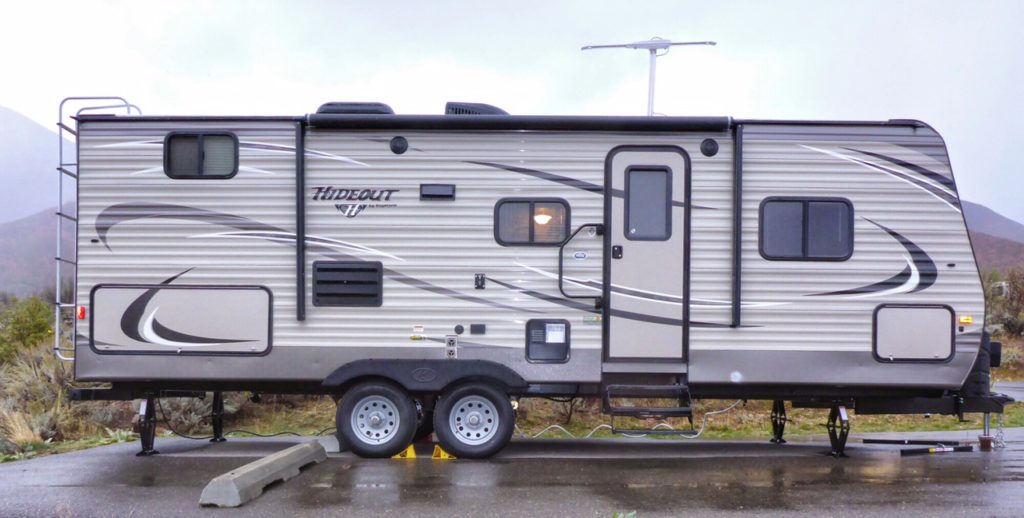
What is a conventional travel trailer?
Conventional travel trailers are fully enclosed units that can be towed behind a vehicle. They can range from 12 to 35 feet in length. You might pay as little as $8,000 for a small, simple model all the way up to $95,000 for a huge unit with all of the current bells and whistles.
What are the benefits of conventional travel trailers?
If you are RV shopping, you are bound to find a travel trailer that suits your needs. There are so many floor plan options! Some are small and lightweight enough to be towed by the family SUV, meaning your daily driver can be your tow vehicle. Many floor plans offer ample storage and sleeping spaces. Families will love the variety of bunkhouse models. One big plus of a travel trailer over a motorhome is that you don’t have the extra expense of another engine to maintain.
What are the drawbacks of conventional travel trailers?
If you don’t already have a vehicle equipped to tow a travel trailer, finding one and paying for it might be the biggest drawbacks of travel trailers. It can also be a little intimidating running the numbers while RV shopping to make sure you can safely tow. Plus, if you live in a neighborhood, you may have some HOA restrictions–or not have enough space–to store a travel trailer. Finally, if you enjoy boondocking or dry camping, a travel trailer might not be the easiest to work with.
Fifth Wheel
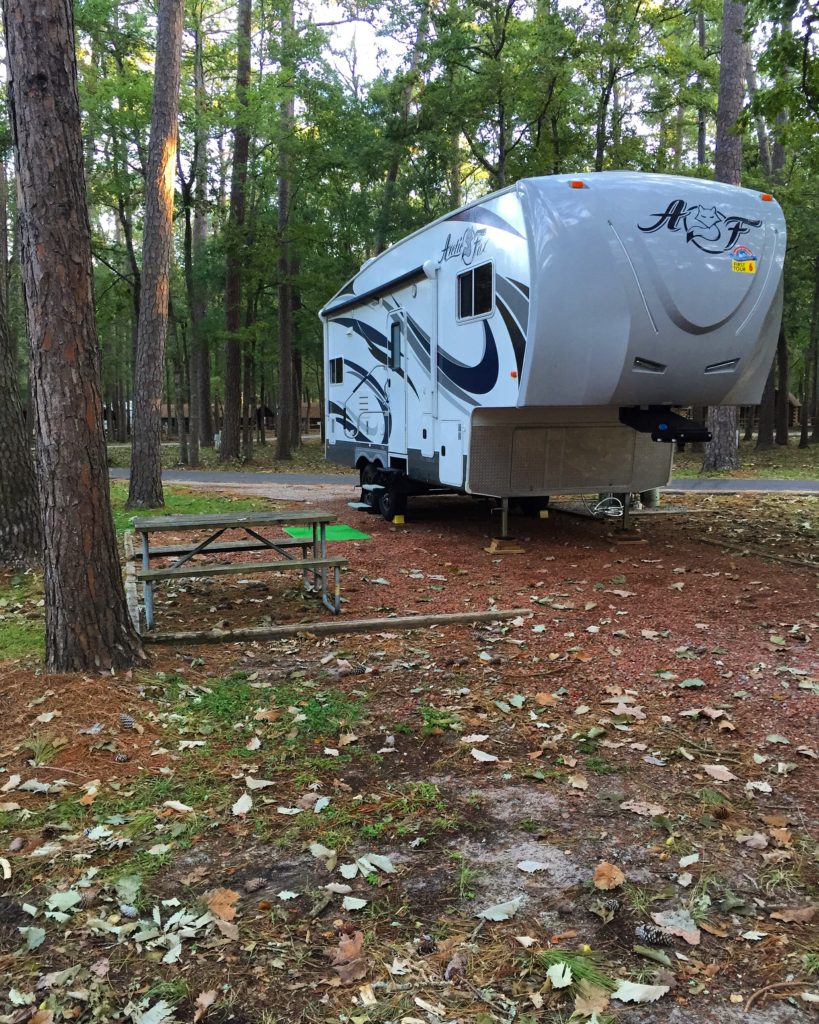
What is a Fifth-Wheel Trailer?
Fifth wheels are the grandaddy of the trailer world. Coming in at 21-40 feet long and packed with luxurious interiors, fifth wheels often feel the most residential inside. They attach to a pickup truck via a special hitch, and the living space extends up and over this hitch, giving them more interior space than conventional travel trailers.
What are the benefits of a Fifth-Wheel Trailer?
Fifth wheels are often have upgraded design details. Thanks to their roomy interiors, they offer the most separation in sleep areas. You will also find tons of storage. One benefit of a fifth wheel could be the ease of towing, depending on your preferences.
What are the drawbacks of a Fifth-Wheel Trailer?
Fifth-wheel trailers do require a tow vehicle that can handle the extra weight (usually larger, well-equipped pickups). You’ll have to have the special hitch installed in your truck bed, which takes up some of the storage space. One of the biggest drawbacks of a fifth wheel is that many are too large to easily get into state and national park campgrounds. These rustic parks often have smaller sites and roadways.
Class B

What is a Class B Motorhome?
Class B motorhomes are drive-able RVs built on a standard full-sized van chassis. You’ll find them ranging from 16-22 feet in length, costing between $60,000-130,000. These usually sleep a maximum of four people. Those who are RV shopping for a “couples coach” will often see the appeal of a Class B.
What are the benefits of a Class B Motorhome?
Class B motorhomes are small and zippy! They are easy to drive and easy to store. They might even fit into your residential garage, if your door has sufficient height. Some people use them as their daily drivers, so they don’t have to have an extra vehicle. Class Bs are a popular size for couples who want to hit the open road with ease. Plus, you just have to pull into your campsite and hook up before getting a good night’s sleep.
What are the drawbacks of a Class B Motorhome?
Class B motorhomes are not great for families due to the tight living quarters. You won’t find a ton of storage or extra sleeping spaces. The price can be another major drawback of a Class B, as well. Though they are smaller, many of the Class B manufacturers put an emphasis on quality. Expect to pay more per square foot. Finally, you will have to disconnect all of your hookups every time you leave the campground since you won’t have a separate vehicle. Some people get tired of this.
Class C
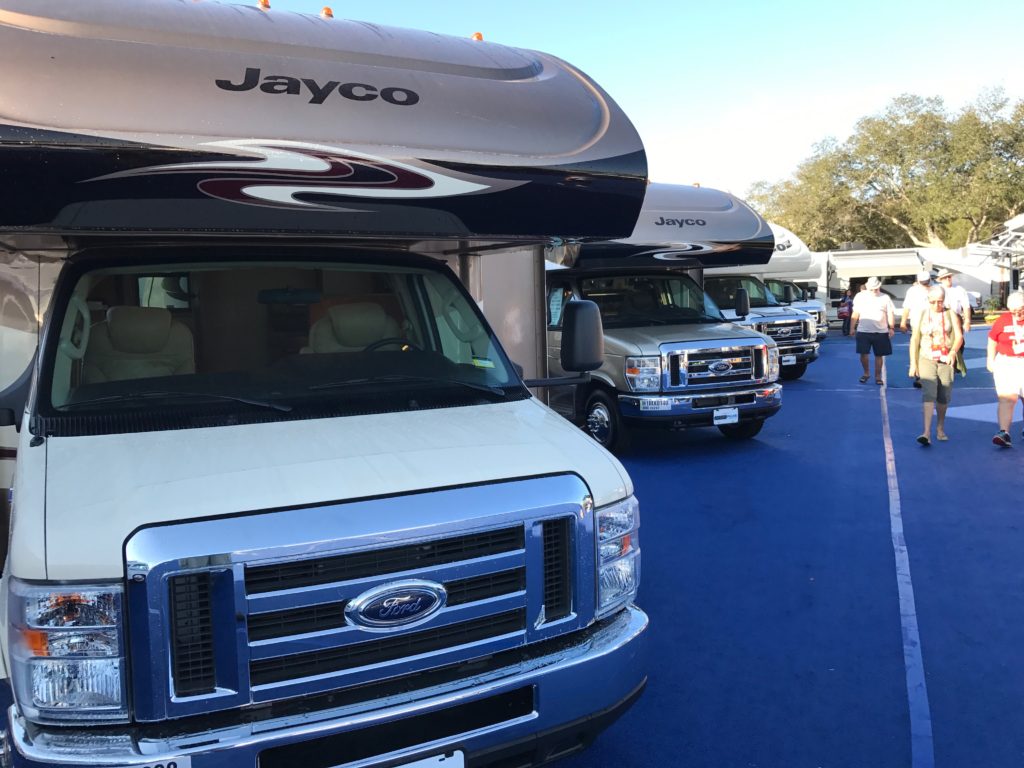
What is a Class C Motorhome?
A Class C is a motorhome built on a van or truck chassis. They are recognizable by the large living cabin that extends over the driving cab. These range from 21-35 feet and can sleep up to eight. Expect to pay between $43,000-200,000+ for a Class C.
What are the benefits of a Class C Motorhome?
Class Cs are a popular choice for families who want a motorhome since they are larger than a Class B and less expensive and/or shorter than a Class A. They are the “just right” size! Buyers often appreciate that they do not have to have a separate tow vehicle. They require very little set up or breakdown. You might find them even more comfortable for traveling since everyone has a little more space. The electrical outlets, fridge, bathroom, and everything you need is all right there!
What are the drawbacks of a Class C Motorhome?
Class C motorhomes come in a wide range of price points, with the priciest costing much more than the price of a tow vehicle and trailer. Also, you’ll be responsible for the engine maintenance of another vehicle since you wouldn’t use one as a daily driver. Finally, even though they are easy to set up, many travelers end up finding themselves wanting a smaller vehicle to tow behind the Class C to make trips away from the campground easier.
Class A

What is a Class A Motorhome?
Class A motorhomes are the largest motorized units available. They are tall, and they are long! You’ll find them ranging from 21-40 feet, with sleeping room for up to six people. The price point is usually between $60,000-500,000 and up.
What are the benefits of a Class A Motorhome?
Class A motorhomes have a huge front window that makes them perfect for road trips. You will travel in comfort, and with many luxury offerings, you can live in comfort, as well. These are great for couples, with some family friendly models also available. Class A interiors often have a residential look and feel.
What are the drawbacks of a Class A Motorhome?
A Class A motorhome might not be your best bet if money is a factor. They cost a lot to purchase and to maintain since they are not built on a common chassis, like the Class B or C motorhomes. Generally, you’ll find the floor plans more limited, especially if you’re looking for one with more dedicated beds. Finally, many people end up towing another vehicle behind their Class A since these motorhomes are the hardest to drive and park. You’ll have less maneuverability due to your considerable length.
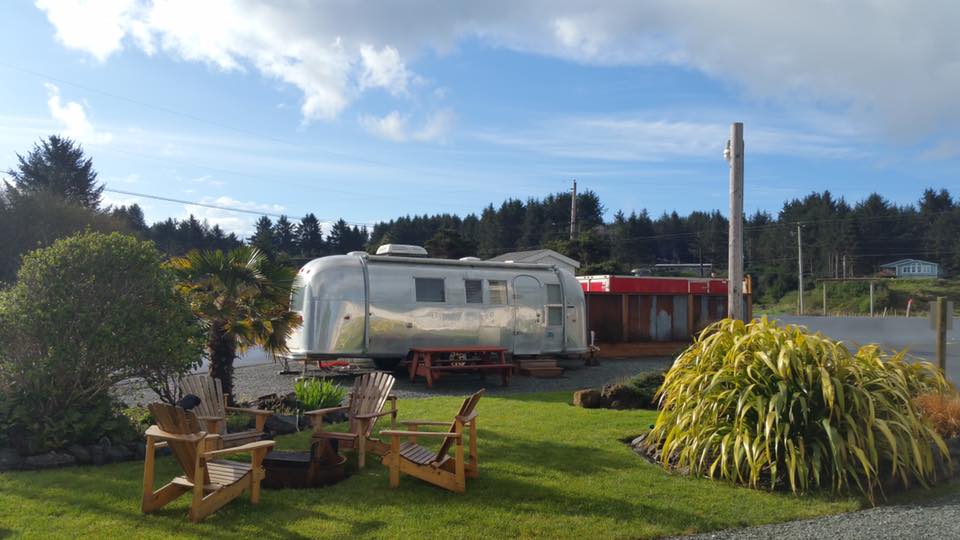
RV Shopping Resources
We hope this overview helps you kick off your RV shopping! You should also check out 5 Questions That Will Help You Find the Perfect RV: RV Shopping Series, Part One and 10 Tips for Finding the Perfect RV Model: RV Shopping Series, Part 2.
Be sure to also visit Go RVing’s Compare RVs page, where you can learn more about each RV type and get some personalized feedback using the Find My RV tool.
If you are RV shopping, we believe the perfect one is out there just waiting for you to bring it on some amazing adventures. But for now, enjoy this part of your RV journey!
See you at the campground,
Stephanie + Jeremy

